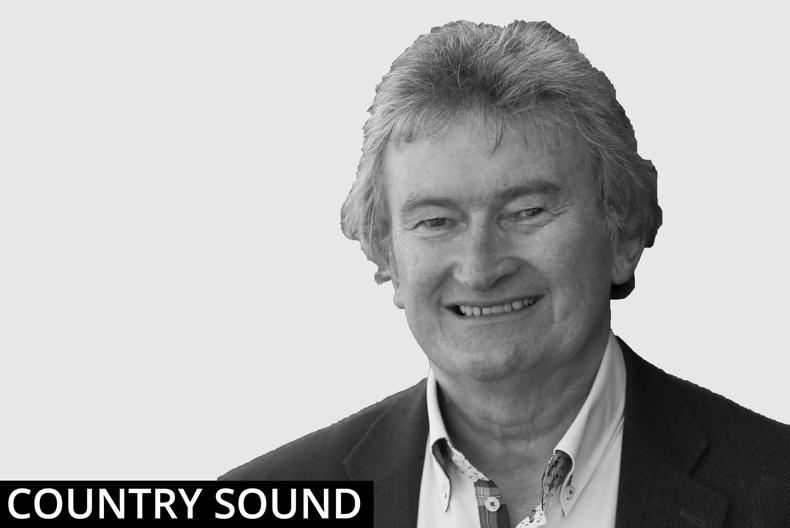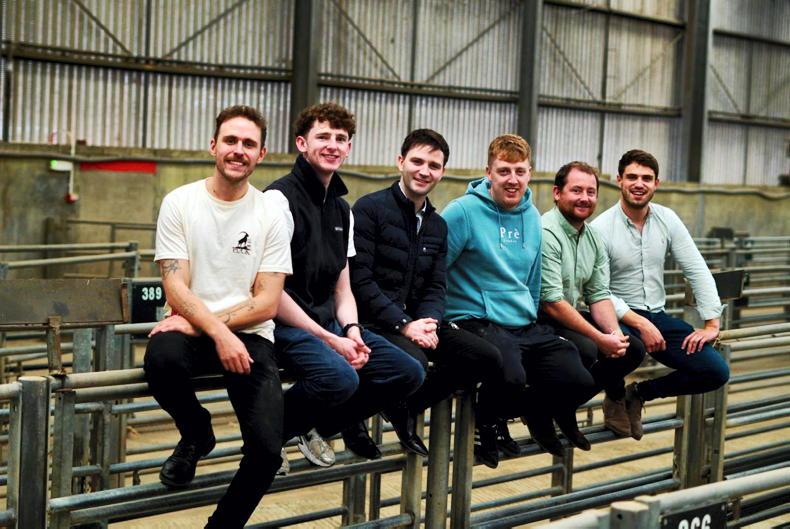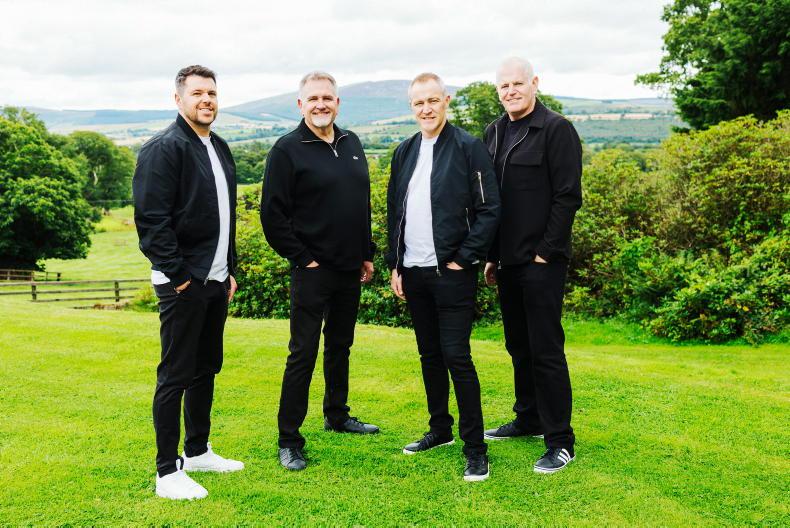I could feel a shiver go up my spine and I just wanted to retreat into the sanctuary of my mind, as I pictured the country giants of former times perform on this stage.
In my mind’s eye, I was there in the pews listening to Hank Williams sing I’m So Lonesome I Could Cry, The Carter Family and Mother Maybelle, raising the roof with The Wildwood Flower and Keep on the Sunnyside, Bill Monroe and the Bluegrass Boys belting out Blue Moon of Kentucky, and Johnny Cash and June Carter singing Ring of Fire and Jackson.
The Ryman is a place of pilgrimage for those of us immersed in the country music tradition. It is here that the old songs from Ireland, Scotland and the north of England found a new expression when they came down from the mountains of Appalachia as folk and country music.
The Ryman Auditorium has a sanctity that can take hearts and souls to the mountain top. It was the brainchild of Thomas Ryman, who was born in Nashville in 1841. He later operated a steamboat service on the Cumberland River.
After attending a revival meeting conducted by the Rev Sam Jones, he underwent a spiritual conversion and pioneered the building of the Union Gospel Tabernacle, which was opened in 1892. Its goals were “strictly religious, non-sectarian, and non-denominational and for the purpose of promoting religion, morality and the elevation of humanity to a higher plane and more usefulness”.
Thomas Ryman died in 1904 and, in the years that were to follow, the Union Tabernacle was to become known as the Ryman Auditorium.
Female pioneers
One woman whose name was to become synonymous with the Ryman was Lula Naff. In an almost totally male-dominated industry, she became a beacon for female pioneers on the music and theatre scene.
Such was her belief in the charisma of Irish tenor John McCormack from Athlone in the 1930s, that she mortgaged her house to bring him to the Ryman. She oversold the auditorium and the show was an amazing success.
The Ryman Auditorium has a sanctity that can take hearts and souls to the mountain top. It was the brainchild of Thomas Ryman, who was born in Nashville in 1841
The Ryman became home to the Grand Ole Opry in 1943 and the next 30 years made it one of the most famous venues in the world. With the boom in country music it was felt that it was too small and the Opry moved out of town to Opryland in the mid-1970s.
The closure of the Ryman brought the curtains down on the golden era of country music and there were plans to demolish the old Mother Church in Nashville. After being closed for a number of years, the mood for the preservation of this iconic institution took hold in the hearts of many and it came back to life in 1994, when Garrison Keillor hosted the grand re-opening show in A Prairie Home Companion series. The resurrection of the Ryman had manifested itself in all its glory.
Opryland
Later on Friday night, our tour guide Deirdre Grant took us to the Grand Ole Opry Show out in Opryland. I was pleasantly surprised to find plenty of old-time country still much to the fore at the show. Carlene Carter, daughter of June, was the perfect link with the Carter Family and their unique place in country music going back to the Bristol Sessions of 1927.
Jeannie Seely, who celebrated 50 years as a member of the Grand Ole Opry in 2017, was one of the special guests. The Whites, Adrian Martin Murphy, a bluegrass band and a western band, as well as two of the more recent newcomers to the scene, also featured on the show.
Perhaps nobody fascinated me more than the ultra cool compere, Eddie Stubbs. This man is an Opry legend and has one of the greatest radio voices I have ever come across down the years. He was hired by the Grand Ole Opry in 1995 and he also presents weekly shows on the legendary WSN in Nashville.

Michael Commins, who writes the weekly Country Sound pages.
Louisville
It was an early start on Saturday for the three-hour coach journey from Nashville to Louisville. The flat lands of Kentucky were easy on the eye and the rural vista conjured up images of the strains of the magnificent theme music composed by Jerome Moross for The Big Country.
As a devotee of the song-writing skills of Tom T Hall, my heart saluted one of my country heroes and I was glad to be in his home state of Kentucky. In the last five years Louisville has undergone an amazing renaissance and is now branding itself as the Bourbon Whiskey capital of the USA. Distilleries and restaurants are all part of the Bourbon Trail that is attracting thousands to the city.
Louisville was the hometown of Muhammad Ali (Cassius Clay), one of the most legendary heavyweight boxing champions of them all. The life and times of the sporting icon is celebrated in the Muhammad Ali Center which was opened back in 2005.
The center does justice to the legend and contains records of all his fights. I especially looked out for his Croke Park showdown with Al ‘Blue’ Lewis in July 1972, while also checking up his famous encounter with England’s Henry Cooper. Ali had a special affinity with Ireland and the people of Clare honoured him with a Freeman of Ennis accolade in 2009.
Churchill Downs
From there it was a short trip to Churchill Downs, home of the Kentucky Derby. It officially opened in 1875 and held the first Kentucky Derby that year. Amazingly, no horse trained in Europe has ever won this legendary race, which has now been run 144 times.
On June 5, 1907, African American jockey James Lee set a record that has never been beaten, when he won the entire six-race card at Churchill Downs. The dirt oval main track is one mile in circumference and is 79-80ft wide with a 120ft-wide section for the starting gate. The Derby is held the first Saturday in May.
Our tour guide provided us with plenty of information about the history of one of the world’s most legendary races, including the singing of My Old Kentucky Home prior to the race as around 160,000 spectators join in the rendition of the song composed by Stephen Foster.
Sunday morning saw a sizeable number of our tour group head over to the Nashville Cowboy Church, which is close enough to the Opry. This is an interdenominational service and is run by Joanne Cash, a sister of the late Johnny Cash, and her husband and preacher, Dr Harry Yeats.
A wonderfully talented traditional country band was on-stage and they were joined by some folks who rendered a selection of country gospel favourites from over the years.
Olivia Harms, daughter of Joni from Oregon, was among the performers while we were there. She and her mother have done some shows in Ireland and are close friends of the Sheerin Family Band from Westmeath.
Later that afternoon we headed downtown to Broadway. The town was buzzing in the warm Tennessee sunshine that splashed down on music city.
In fabled Tootsie’s we raised a glass as we admired the array of photographs from over the decades adorning every wall. This was where many of Nashville’s greatest legends came for late night drinks from the nearby Ryman Auditorium. It has not changed much as tradition is cherished in these parts.
I could feel a shiver go up my spine and I just wanted to retreat into the sanctuary of my mind, as I pictured the country giants of former times perform on this stage.
In my mind’s eye, I was there in the pews listening to Hank Williams sing I’m So Lonesome I Could Cry, The Carter Family and Mother Maybelle, raising the roof with The Wildwood Flower and Keep on the Sunnyside, Bill Monroe and the Bluegrass Boys belting out Blue Moon of Kentucky, and Johnny Cash and June Carter singing Ring of Fire and Jackson.
The Ryman is a place of pilgrimage for those of us immersed in the country music tradition. It is here that the old songs from Ireland, Scotland and the north of England found a new expression when they came down from the mountains of Appalachia as folk and country music.
The Ryman Auditorium has a sanctity that can take hearts and souls to the mountain top. It was the brainchild of Thomas Ryman, who was born in Nashville in 1841. He later operated a steamboat service on the Cumberland River.
After attending a revival meeting conducted by the Rev Sam Jones, he underwent a spiritual conversion and pioneered the building of the Union Gospel Tabernacle, which was opened in 1892. Its goals were “strictly religious, non-sectarian, and non-denominational and for the purpose of promoting religion, morality and the elevation of humanity to a higher plane and more usefulness”.
Thomas Ryman died in 1904 and, in the years that were to follow, the Union Tabernacle was to become known as the Ryman Auditorium.
Female pioneers
One woman whose name was to become synonymous with the Ryman was Lula Naff. In an almost totally male-dominated industry, she became a beacon for female pioneers on the music and theatre scene.
Such was her belief in the charisma of Irish tenor John McCormack from Athlone in the 1930s, that she mortgaged her house to bring him to the Ryman. She oversold the auditorium and the show was an amazing success.
The Ryman Auditorium has a sanctity that can take hearts and souls to the mountain top. It was the brainchild of Thomas Ryman, who was born in Nashville in 1841
The Ryman became home to the Grand Ole Opry in 1943 and the next 30 years made it one of the most famous venues in the world. With the boom in country music it was felt that it was too small and the Opry moved out of town to Opryland in the mid-1970s.
The closure of the Ryman brought the curtains down on the golden era of country music and there were plans to demolish the old Mother Church in Nashville. After being closed for a number of years, the mood for the preservation of this iconic institution took hold in the hearts of many and it came back to life in 1994, when Garrison Keillor hosted the grand re-opening show in A Prairie Home Companion series. The resurrection of the Ryman had manifested itself in all its glory.
Opryland
Later on Friday night, our tour guide Deirdre Grant took us to the Grand Ole Opry Show out in Opryland. I was pleasantly surprised to find plenty of old-time country still much to the fore at the show. Carlene Carter, daughter of June, was the perfect link with the Carter Family and their unique place in country music going back to the Bristol Sessions of 1927.
Jeannie Seely, who celebrated 50 years as a member of the Grand Ole Opry in 2017, was one of the special guests. The Whites, Adrian Martin Murphy, a bluegrass band and a western band, as well as two of the more recent newcomers to the scene, also featured on the show.
Perhaps nobody fascinated me more than the ultra cool compere, Eddie Stubbs. This man is an Opry legend and has one of the greatest radio voices I have ever come across down the years. He was hired by the Grand Ole Opry in 1995 and he also presents weekly shows on the legendary WSN in Nashville.

Michael Commins, who writes the weekly Country Sound pages.
Louisville
It was an early start on Saturday for the three-hour coach journey from Nashville to Louisville. The flat lands of Kentucky were easy on the eye and the rural vista conjured up images of the strains of the magnificent theme music composed by Jerome Moross for The Big Country.
As a devotee of the song-writing skills of Tom T Hall, my heart saluted one of my country heroes and I was glad to be in his home state of Kentucky. In the last five years Louisville has undergone an amazing renaissance and is now branding itself as the Bourbon Whiskey capital of the USA. Distilleries and restaurants are all part of the Bourbon Trail that is attracting thousands to the city.
Louisville was the hometown of Muhammad Ali (Cassius Clay), one of the most legendary heavyweight boxing champions of them all. The life and times of the sporting icon is celebrated in the Muhammad Ali Center which was opened back in 2005.
The center does justice to the legend and contains records of all his fights. I especially looked out for his Croke Park showdown with Al ‘Blue’ Lewis in July 1972, while also checking up his famous encounter with England’s Henry Cooper. Ali had a special affinity with Ireland and the people of Clare honoured him with a Freeman of Ennis accolade in 2009.
Churchill Downs
From there it was a short trip to Churchill Downs, home of the Kentucky Derby. It officially opened in 1875 and held the first Kentucky Derby that year. Amazingly, no horse trained in Europe has ever won this legendary race, which has now been run 144 times.
On June 5, 1907, African American jockey James Lee set a record that has never been beaten, when he won the entire six-race card at Churchill Downs. The dirt oval main track is one mile in circumference and is 79-80ft wide with a 120ft-wide section for the starting gate. The Derby is held the first Saturday in May.
Our tour guide provided us with plenty of information about the history of one of the world’s most legendary races, including the singing of My Old Kentucky Home prior to the race as around 160,000 spectators join in the rendition of the song composed by Stephen Foster.
Sunday morning saw a sizeable number of our tour group head over to the Nashville Cowboy Church, which is close enough to the Opry. This is an interdenominational service and is run by Joanne Cash, a sister of the late Johnny Cash, and her husband and preacher, Dr Harry Yeats.
A wonderfully talented traditional country band was on-stage and they were joined by some folks who rendered a selection of country gospel favourites from over the years.
Olivia Harms, daughter of Joni from Oregon, was among the performers while we were there. She and her mother have done some shows in Ireland and are close friends of the Sheerin Family Band from Westmeath.
Later that afternoon we headed downtown to Broadway. The town was buzzing in the warm Tennessee sunshine that splashed down on music city.
In fabled Tootsie’s we raised a glass as we admired the array of photographs from over the decades adorning every wall. This was where many of Nashville’s greatest legends came for late night drinks from the nearby Ryman Auditorium. It has not changed much as tradition is cherished in these parts.










SHARING OPTIONS